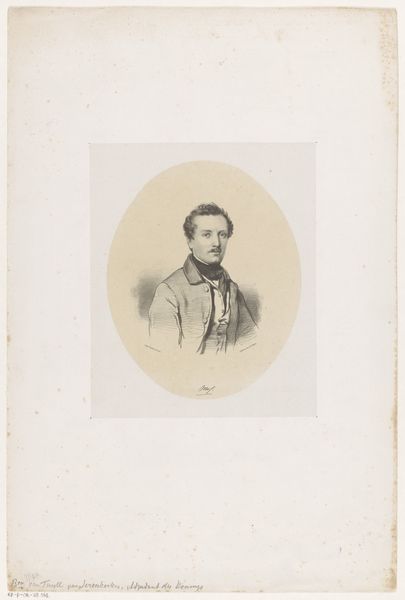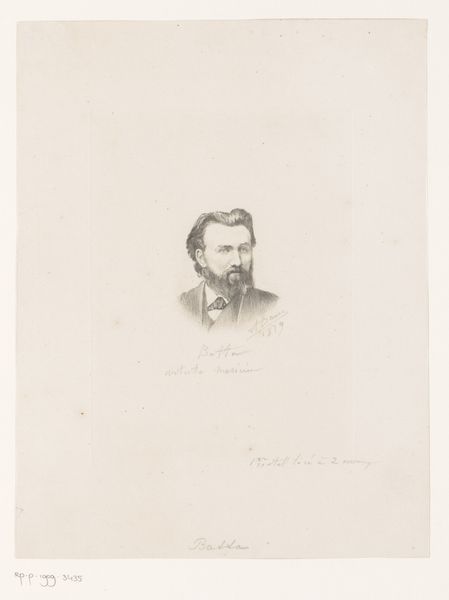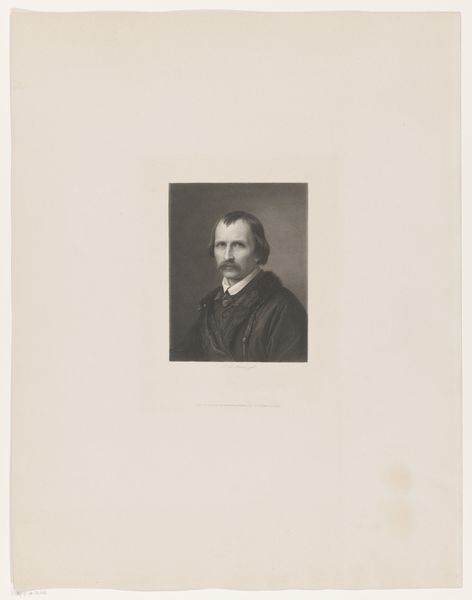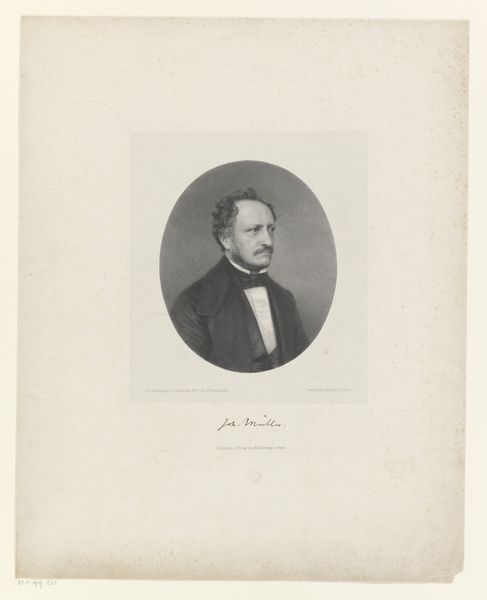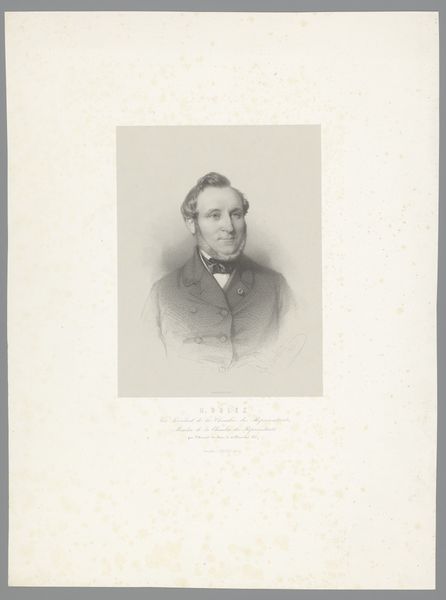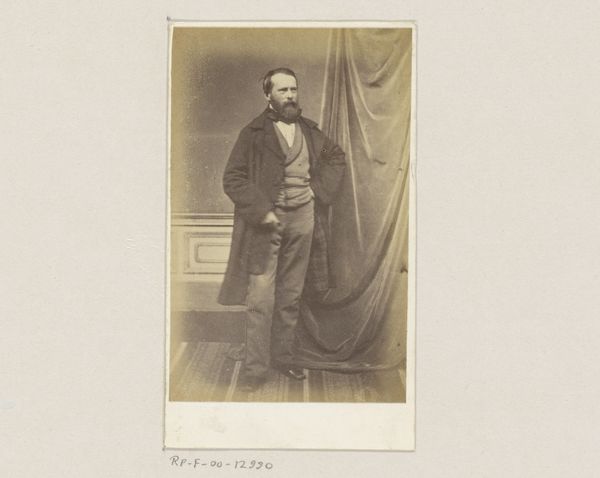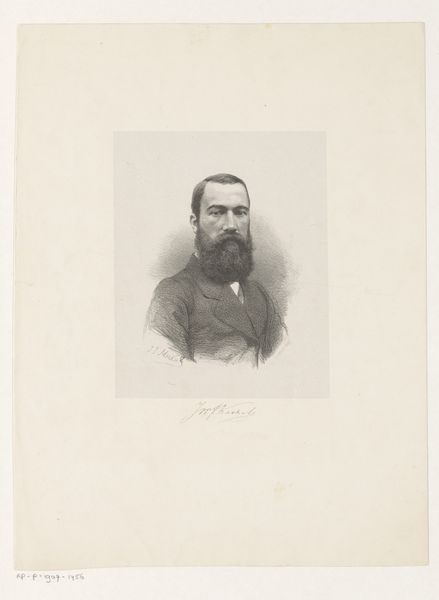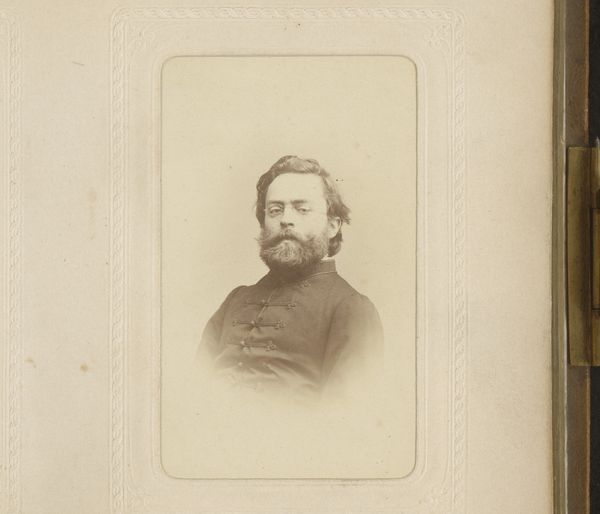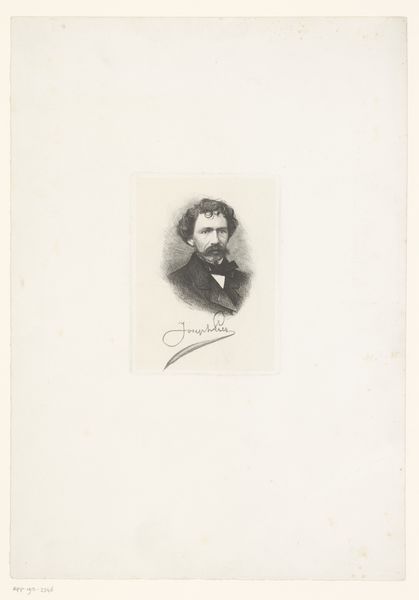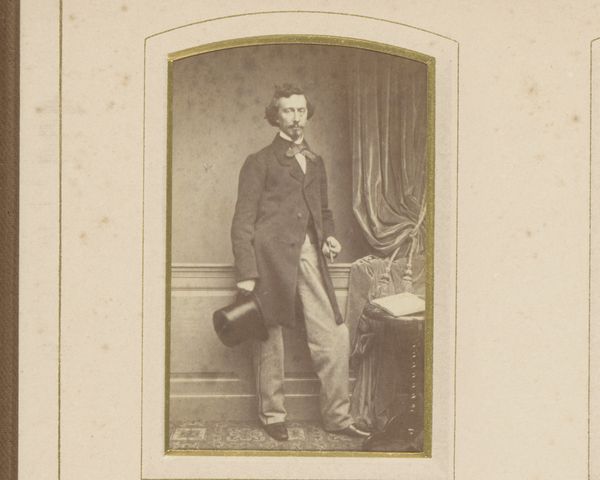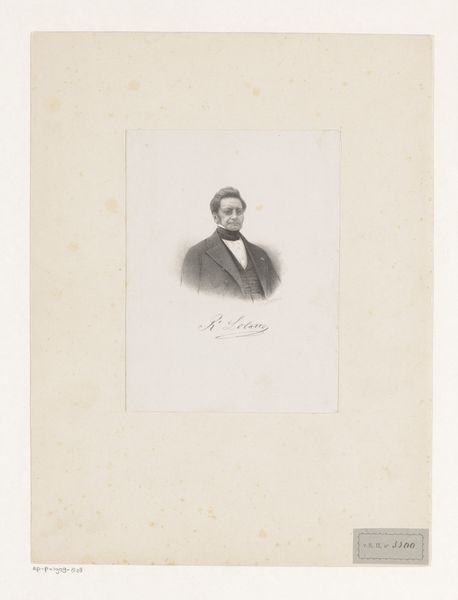
daguerreotype, photography
#
portrait
#
daguerreotype
#
photography
Dimensions: height 90 mm, width 72 mm, height 250 mm, width 185 mm
Copyright: Rijks Museum: Open Domain
Curator: Standing before us is a portrait made with the daguerreotype process, depicting Paul Meurice and crafted between 1853 and 1854 by Charles Hugo. It presents such a somber image. Editor: Indeed, there’s a directness in its stark contrasts; the gentleman’s stern gaze coupled with that almost unnervingly still pose evokes a palpable sense of Victorian formality, which seems amplified by the very act of photographic creation itself. Curator: Let's consider the materiality itself. A daguerreotype involved polishing a silver-plated copper sheet, treating it with fumes to make it light-sensitive, and then exposing it in a camera. The length of exposure certainly dictated posture, making for some unnatural and prolonged gestures! Also, this process was painstaking labor for even a single plate. How do we think this intersects with early class structures? Editor: A crucial point. Photography, particularly daguerreotypes, were relatively accessible to the middle class seeking a modern, affordable portrait. These images democratized representation, yet were controlled within the market; daguerreotypists as new laborers and craftsmen operating studios shaped public imagery. The power of commissioning and image ownership shifted hands, changing visual rhetoric and political representation. Curator: And beyond social access, it provided a more lifelike effect for broader dissemination, even if carefully constructed through posing. And Hugo certainly plays with the conventions, from its somber quality, to his arms firmly crossed over his chest in defiance! Editor: It becomes evident that daguerreotypes gained popularity because they offered individuals increased social mobility, impacting social structures, economics of image consumption, and of course personal identity. It challenges any notion of an ‘authentic’ moment of portraiture by emphasizing instead material reality, process, and accessibility as shaping the production. Curator: Looking closely then, it becomes more apparent how "Portret van Paul Meurice" acted less as simple record but more as tool within socio-economic forces driving change. Editor: Precisely; seeing portraiture beyond subject reveals process’ deep interweaving inside cultural progression and economic developments around visual creation, providing richer depth to initial dark austerity presented through this lens. Curator: It moves us to truly rethink its purpose beyond surface appearances, towards larger significance around that time! Editor: Indeed. And it is essential to remember that every portrait encapsulates that intersection, material traces embedded and social commentary delivered both at once.
Comments
No comments
Be the first to comment and join the conversation on the ultimate creative platform.
